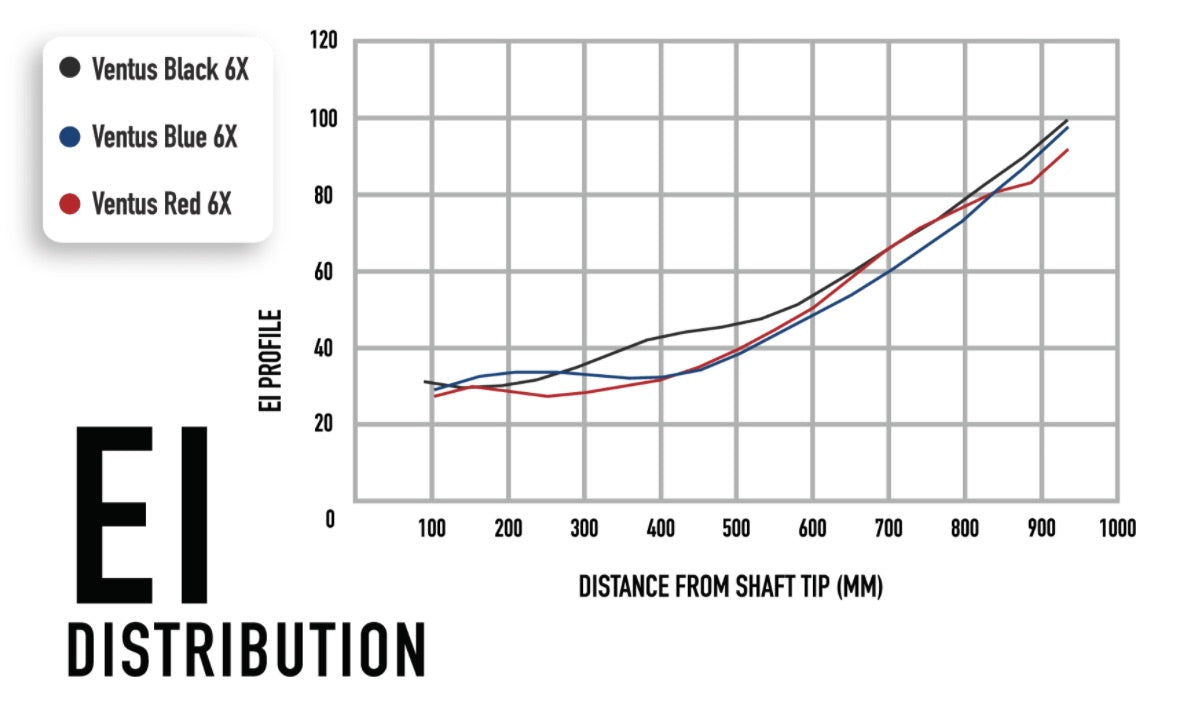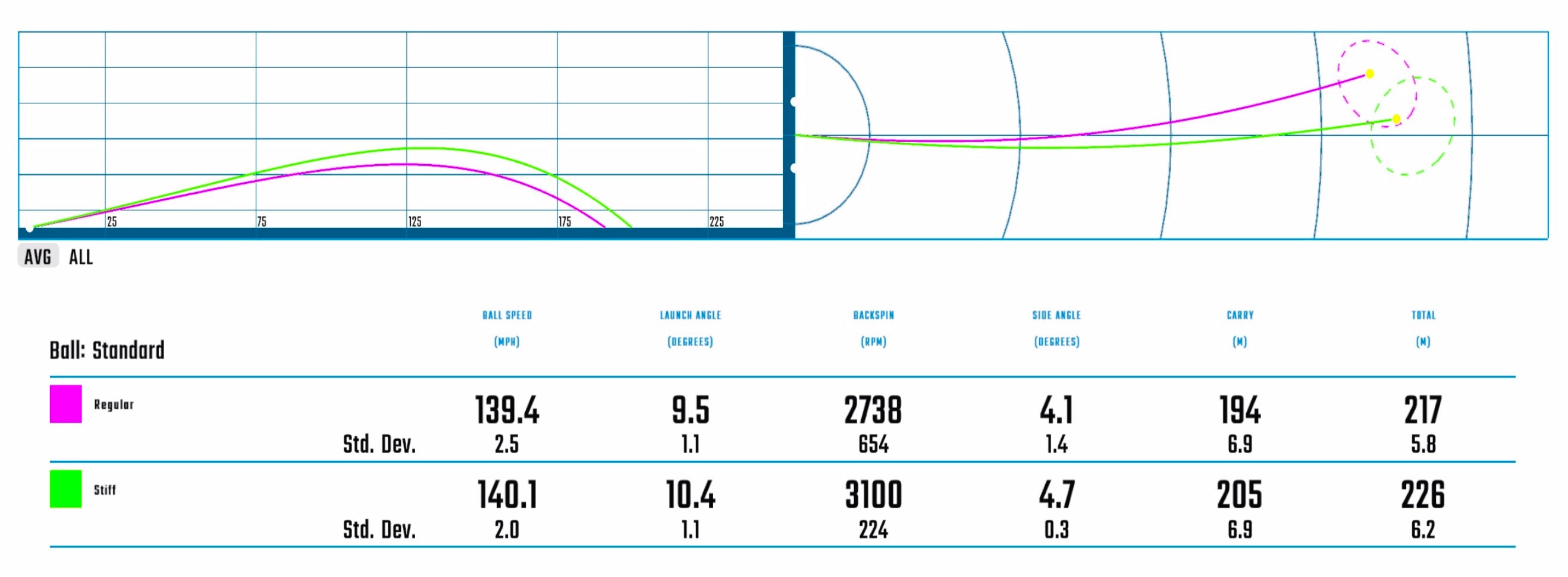Comparing different Golf shaft flexes: Stiff vs. Regular
Everyone knows that shafts have different flexes and that some are softer than others. And everyone has probably gamed a club with a shaft that was either too soft or too hard. When it comes to finding the right shaft for a player you have to ask yourself what is too hard, what is too soft and what is in the middle.
First of all we should clarify what the stiffness refers to. Every shaft behaves differently and is soft or hard in different places. The current state of "science" is to create an EI profile for each shaft that shows exactly where the shaft is stiff and where it bends more. You clamp the shaft and measure every few cm how hard the shaft is at this point. The result is a curve that decreases from the end of the handle to the tip section. This means that each shaft is harder in the grip area than at the tip, which is a design requirement due to its thickness. An EI profile looks like this:

What distinguishes a good shaft is that these profiles are identical from shaft to shaft. So if I test 10 different Fujikura Ventus Black in 6S shafts, the EI profile should be identical. This is not the case with inferior shafts and the profiles of the shafts vary. Here it is pure coincidence to find the right shaft for you. When we talk about the stiffness of a shaft, we mean the entire surface under such curve. Thereby you express the "total stiffness".
Regular vs. Stiff shaft - the comparison
In this test we want to equip two players with different shafts and clubs. Player A received a 7 iron and player B a 3 wood, each with a hard and a soft shaft. These are the same shafts and shaft weights only with different flex.
If you were to ask the average golfer what would happen before the test, the following answers would probably be given: "The soft shaft produces a hook", "The softer shaft flies further" or "the club face is more open with the soft shaft" etc.
The interesting thing is that all these statements will be true for a particular player with a particular shaft whose flex is too soft or too hard. But the question is what is actually behind them.

Flex not equal to flex
It is also important to note that we have tested two identical shafts with different flexes. A label like "Regular" or "Stiff" itself does not say much. Every manufacturer and every shaft series is different here. A Stiff shaft from shaft A can be significantly softer or harder than a Stiff shaft from shaft B. The flex can also vary with different weights. For example, a Nippon Modus 120 in Stiff can be harder than a Modus 105 in Stiff.
Player A with a 7 iron
We have equipped this player with a regular shaft for testing purposes only. This is obviously much too soft and as you can see the results were quite clear. The player was able to accelerate the shaft better with 2mph more clubhead speed - but the Smash Factor of 1.28 was much lower and the variance in the strike pattern was also much lower. In short: Player A swung the soft shaft faster but did not hit the ball as well.

The most important thing is that this player had trouble controlling the direction with the regular shaft. It is clearly visible that the typical draw of the player with the soft shaft is missing and the ball stays to the right of the target. The soft shaft made sure that the clubface stays too open - hence the push. You can easily imagine this: The shaft "bends too far back" during the moment of impact and thus "stays away" from the ball. The release is "delayed" and the clubface remains open.

Player B with a 3 wood
With our second player, however, things looked quite different. The trend in terms of club head speed and efficiency was the same. This player was also able to accelerate the regular shaft better, but overall he hit it slightly worse. So much so that the ball speed was higher with the stiffer shaft and the carry length was 11m longer.

The Regular shaft was also too soft for this player and it was not possible to hit the ball consistently. The launch was too flat and the spin too low. The dispersion is rather interesting though. Player B missed the target with the soft shaft on the left side. He produced too strong a hook and the clubface was too closed for the swing direction. The "path" shows that the player comes almost 2° more from the inside. This is simply explained by the fact that the club head with the soft shaft is too far behind but is also "released too quickly". The release occurs too early and the clubface closes too strongly. This is the reason for the lower dynamic loft, the lower launch and the low spin.

Our conclusion
Both players demonstrate how important the right flex is. Especially with player B the results are so different that the clubs and shafts could be completely different. But apart from the flex we have not changed anything.
With player A the differences are mainly in the direction. And player A would actually have problems on the course with this type of push. With player B, however, we see the exact opposite with a too strong hook with the soft shaft. A general statement that a soft shaft produces more hooks or pushes is therefore not possible.
The test again shows how individual the shaft Flex can be. Shafts are very complex and identical shafts can produce completely different results for two different players with identical club head speed. Among other things, it also depends on how aggressive the transition is and when a player "releases" the club, i.e. when the release takes place.
In short: never choose your flex lightly and in the sense of "I have always gamed stiff, so I take stiff with the new shaft". Ideally you should get fit and find out which flex really fits you.
